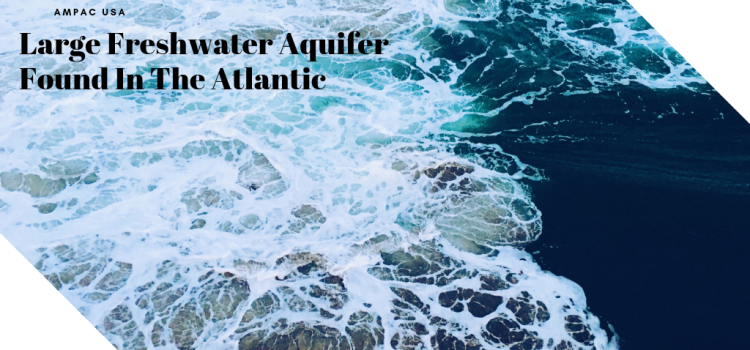Last month on 18 June, a new discovery made by researchers at Columbia University caught the attention of everyone in the States. First published in the Scientific Reports, this research has come up with a promising lead of a large freshwater aquifer, just northeast of the U.S. in Atlantic. Led by Chloe, Gustafson, the team discovered a hidden aquifer that can fill 1.1 billion Olympic swimming pools with fresh water.
The undersea aquifer has been found along the coastline of New Jersey to Massachusetts probably extending to Rhode Island and New York. It potentially has 2,800 cubic kilometers or 739 trillions of gallons of liquid.
The Discovery
Since the 1970s oil drilling companies have occasionally hit small pockets of freshwater below the seabed which led to the theory that a large pocket beneath the bed may be a reservoir for fresh water.
“We knew there was fresh water down there in isolated places, but we did not know the extent or geometry,” said Chloe Gustafson, a Ph.D. candidate at Columbia University.
In 2015, using a technology previously used by oil companies to identify oil pockets, the team used receivers to measure the electromagnetic waves beneath the seabed. Because saltwater is more conducive to these waves, a band of lower conductance led to the position of a reservoir. The findings, as published recently, point out that these pockets are continuous. Starting at the shore, they extend to 75 miles and the deposits were found at the depth of 600 ft extending to 1200 feet undersea.
How Did It Get There?
The scientists have two possible answers. One is that it was a huge chunk of ice from the last Ice Age which got trapped between sediment rocks and melted. The other and more probable one is that it is being fed by the subterranean runoff from the mainland. This is being considered strongly because the salinity measurements found out that the farther away from the shore it is, the saltier it gets.
The Scope
A discovery like this can help the scientific community a lot. It can help improve the models of the history of continental shelves, giving an idea of how the cycle drives them. But most importantly, it is a hope to the probability of many more such undersea freshwater aquifers which could be a source of water to cities with shortages.
Because the water is slightly salty, it will need to go through a desalination process but it can be a source for millions of people. Only a few more such aquifers could potentially help end the water crisis. “It could turn out to be an important resource in other parts of the world,” Gustafson said.
About The Author:
AMPAC USA is a water treatment manufacturing company that has been working in advancing these systems for the past 30 years. They are leading manufacturers of desalination watermakers that desalinate seawater.










